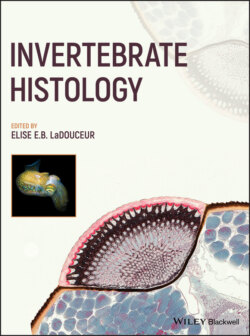Читать книгу Invertebrate Histology - Группа авторов - Страница 10
Foreword
ОглавлениеVeterinary medicine is a dynamic profession that began over 250 years ago to heal and protect working and warring equids along with livestock for food and other human‐use products. The profession has come a long way since the 1700s, most notably in the breadth of species embraced, and the information that exists and is being explored related to this taxonomic diversity. Increasing human population growth, commerce, technology, and animal welfare are all contributing to this expansion. Our profession is more diverse than ever, and a growing part of that diversity is the inclusion of over 97% of the animal kingdom: the invertebrates.
Dr LaDouceur and her internationally recognized contributors have assembled an organized, easy to navigate, comprehensive, and richly illustrated work focused on the microanatomy and histology of the invertebrates. It is certainly the only book of its kind on the market and one that is long overdue. The text is richly illustrated with beautiful images, drawings, and micrographs, detailing the normal gross and microscopic anatomy of the species covered. Chapters also describe how to properly and efficiently process invertebrate tissues for histology. This is critically important as standard vertebrate tissue‐processing methods frequently do not apply to invertebrates. Anatomic features like chitinous shells, glass spicules, calcium carbonate skeletons, and mesoglea, to name a few, may require specialized fixatives, processing, and staining techniques.
One of the biggest challenges for a clinician or pathologist is being able to recognize and become familiar with what is normal about an animal. This challenge is especially pertinent when dealing with nondomestic species. There is no greater or more diverse animal classification than the invertebrates, estimated to include over 1.3 million described species (and it's likely that the global total could be 10 times this number), representing at least 40 phyla. The editor and authors have wisely focused on the taxa that are the most economically important and/or in need of conservation, protection, and veterinary support. This includes species commonly displayed in zoos and aquaria, taxa that are utilized in the laboratory for research, and animals that are kept as pets.
This detailed and thorough text is a windfall for our profession and anyone working on the health and welfare of these animals. Pathologists, veterinary clinicians, histology technicians, invertebrate zoologists, and students studying in these areas will all find this book highly useful and important for their work. The timing for this book could not be better. I'm sure you, the reader, will agree with me, and find this one of the most important references on your bookshelf, in your laboratory, or digitally on your computer.
Gregory A. Lewbart
Raleigh, NC, USA
